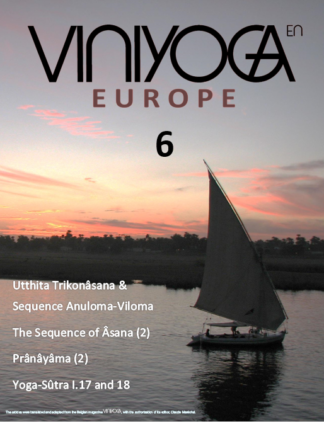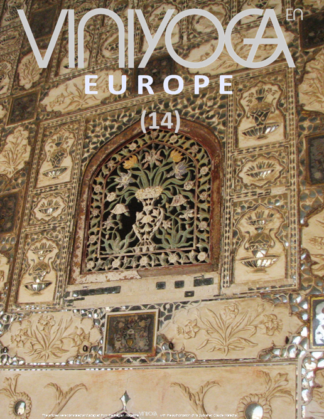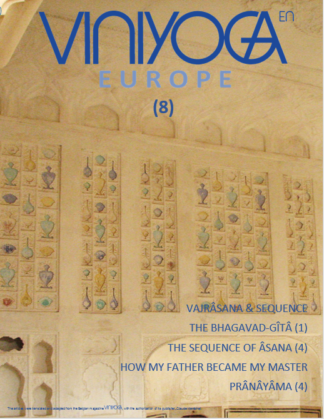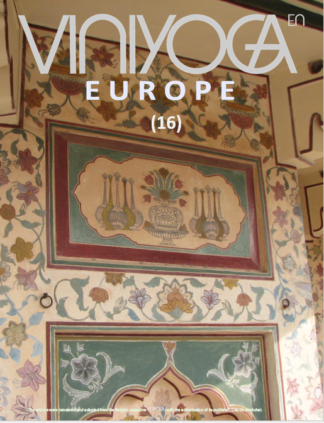Description
(43 pages)
INTERVIEW WITH KRISHNAMACHARYA (part 2)
In Viniyoga Europe 15, we presented Professor Krishnamacharya’s answer to our first question. Here he answers the following two questions.
By Claude Maréchal
PASHCIMATÂNÂSANA
This pose is also called Seated Forward Bend Pose. It is one of the essential postures of yoga-âsana. Many classical texts describe it.
By Bernard Bouanchaud and Viniyoga Belgium
SEQUENCE: PASHCIMATÂNÂSANA
As we will see in this sequence, we can prepare for pashcimatânâsana by bending the torso sideways.
In the beginning, we replace pashcimatânâsana by jânushîrshâsana, which presents the characteristics of an asymmetrical forward bend, in a seated position.
By Claude Maréchal
VINIYOGA OR HOW TO HEAL THE MIND: âsana, prânâyâma and bhâvana
The exercises with postures (âsana), breathing exercises (prânâyâma) and mental attitudes (bhâvana), which accompany them, offer advantageous means to reestablish balance and appease a disturbed mind.
The end of the second chapter of Yoga-Sûtra presents the second and third limb of yoga (âsana and prânâyâma). It gives precious indications for a therapeutic application of yoga.
By Claude Maréchal with the Collaboration of Élizabeth Wieczorek
FEAR AND OM
Desikachar answered two questions about the most deep-rooted source of suffering in human beings (abhinivesha – anguish) and about Om in Yoga-Sûtra.
By T.K.V. Desikachar
IN THE MOON LIGHT: Âsana in the Hatha-Yoga-Pradîpikâ
The Hatha-Yoga-Pradîpikâ is certainly one of the texts whose name is most familiar to yoga practitioners.
The first chapter of this text is about âsana and is fundamental. In order to give the Hatha-Yoga-Pradîpikâ its due, we should dissipate some common misunderstandings.
By Uwe Bräutigam
YOGA-SÛTRA I.34
This aphorism introduces us to a series of “means”, which Patanjali suggests, to restore mental stability. The first one is the most relevant and it is about breath control.
Comments by Professor Shrî Krishnamacharya; Presentation and Explanations: T.K.V. Desikachar





